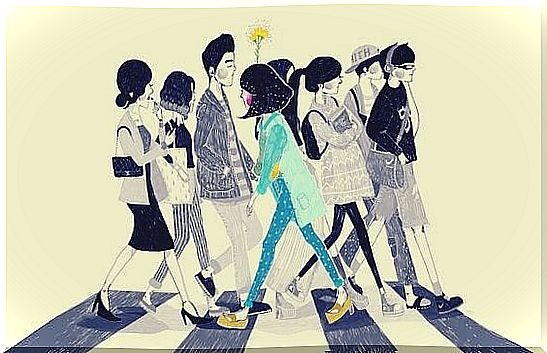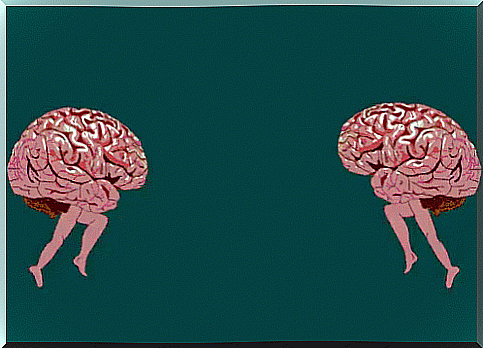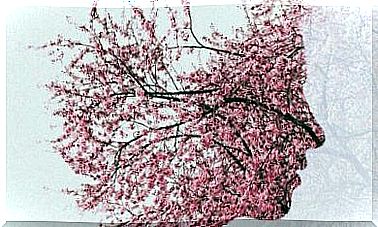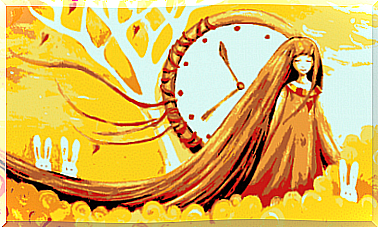Some Poses Create More Distance Than Distance Itself

Some poses create even more distance between people than a giant, icy ocean. It doesn’t matter if it’s the attitude of a family member we live with or our coworker we see every day.
Their rigid perspectives, inflexible ideas, and immovable beliefs build emotional walls and pitfalls that are highly negative.
As we often say, our attitude is a very determining factor in our social and romantic relationships – even more decisive than words. Few things in psychology are so fundamental and yet so interesting as the processes on which human attitudes are essentially based.
As Louis Leon Thurstone said in his day, our attitude is like a chaotic amalgamation of our prejudices, preconceived ideas, fears, evaluations and inclinations. Or on the contrary, an existential network in which a person sees more conflicts than opportunities in his daily life.
In fact, here’s something we see every day. There are always certain people who, through their attitudes and their resulting ways of thinking and acting, greatly enhance or greatly hinder our ability to live together.
Certain psychological tendencies are expressed in social contexts and no one is immune to them. In addition, these tendencies can sometimes sow seeds of discontent that grow into large-scale conflict.

Different types of postures we should know
Viktor E. Frankl once said, “Everything can be taken from a human being except one thing: the last of human freedoms – to choose your attitude to all possible circumstances, to choose your own path”.
From this we can conclude that few tools are as fundamental and effective as using our attitude wisely.
With this in mind, we need to focus on being constructive, flexible and healthy in order to better survive this complex and sometimes contradictory world.
Without a doubt, one of the first questions that come to mind is how to develop and internalize an attitude.
It is important to know that postures are learned. In childhood, often without noticing, we “absorb” many of our family’s values, interpretations, and beliefs.
Still, there usually comes a time when we try to change. We start doing this because of our new experiences or because interactions in different social environments or the media make us reflect on the ideas we have been taught.
Attitudes: the good, the bad, and the ugly
We’ve already said it. Attitudes can sometimes become the source of conflict and distance between people. And this distance can be almost insurmountable.
That’s because people sometimes have a defensive attitude, while still others are very resistant to change and base their interactions on prejudice. And then of course you have the people who live in a world based only on their narcissism and selfishness.
Let’s see what kind of attitudes we can see in our daily life:
- Generous or peaceful attitude. This is the most positive attitude, and the attitude that makes coexistence the easiest. It is based on availability, open-mindedness, acceptance and love. A person with such an attitude always seeks mutual benefit.
- Manipulative attitude. In these cases we see the typical person who is only after one thing: personal advantage. Every behavior and every word has the underlying purpose of cheating to gain personal advantage.
- Selfish attitude. There are people who have shortcomings or have certain needs. For that reason, each of their actions will have the intention of meeting those needs. And they often do this by drawing attention to themselves or making themselves a victim.
- Aggressive attitude. These are people who like to draw lines between themselves and others, guided by prejudice. They often display aggressive beliefs that cause problems.

Four attitudes we need to be happier
Positive psychology reminds us that happiness depends on several factors. One of these is our nature, another is our upbringing (education in the sense of our social context, education, work, relationships, health…), and finally, the most relevant one, of course, is our attitude.
So here’s something to think about. Let’s learn which attitudes we need to integrate into our daily lives to see change. These are:
- Develop a more positive view of the behavior of those around you. Understand that others cannot always behave the way you want them to. For that reason, we need to accept them as they are and focus more on how we can improve ourselves.
- Create a more positive vision of the future and what will happen next. Try to trust yourself and try to trust what tomorrow has in store for you.
- Stop worrying about what you need to be happy. Often what you really lack is already present in you.
- Develop more self-confidence. Make yourself the protagonist in your life, because ultimately you are the person responsible for your happiness.

Finally, as we have seen, the study of human attitudes is as broad as it is enriching.
While it is true that it is sometimes incredibly difficult to live with people who have hostile or complicated attitudes, the key is to protect your own attitude.
Because ultimately it is our attitude that makes us great and that helps us to achieve happiness.









